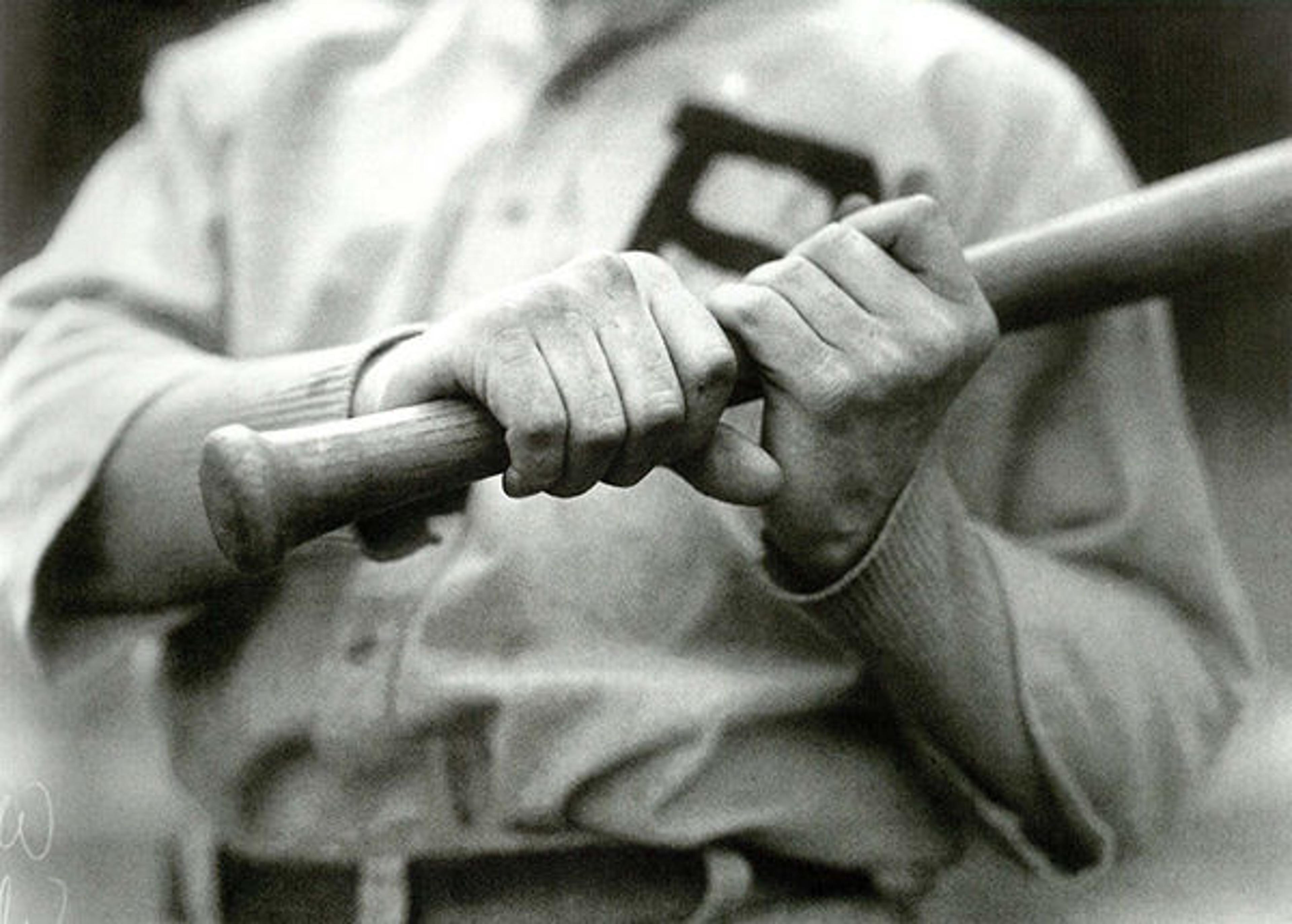Charles M. Conlon. Fred Luderus, 1912 Phillies. From McCabe, Neil. Baseball's Golden Age: The Photographs of Charles M. Conlon. New York: Abrams, 1993. Joyce F. Menschel Photography Library
«It is officially October, a month in which most people's minds begin to think of fall—of changing leaves, trick-or-treaters, and pumpkin spice lattes. To others, however, October means the magic of postseason baseball is finally upon us, and it looks like New York has the Mets to cheer for this year (the Yankees have already been eliminated in a Wild Card game).»
You may be thinking: "Baseball? At the Metropolitan Museum of Art?!" Yes, baseball. The great American pastime is well represented here. Baseball has long been inspired writers, illustrators, painters, and photographers, and this is reflected in the collections of both the libraries and the Museum. In fact, attending a baseball game is as much of a cultural experience as visiting a museum or a library, except you won't find anyone selling peanuts and Crackers Jacks here.
As some of you may know, the Met has a number of libraries and study centers. Materials on baseball are represented in a number of these, including Watson Library, Nolen Library, the Joyce F. Menschel Photography Library, and The Costume Institute's Irene Lewisohn Costume Reference Library.
Baseball lends itself well to children's and juvenile literature. Below is an example of an illustrated version of an 1888 poem by Ernest Thayer, "Casey at the Bat." Nolen Library also has picture books and a graphic novels relating to the sport, including one on Satchel Paige.
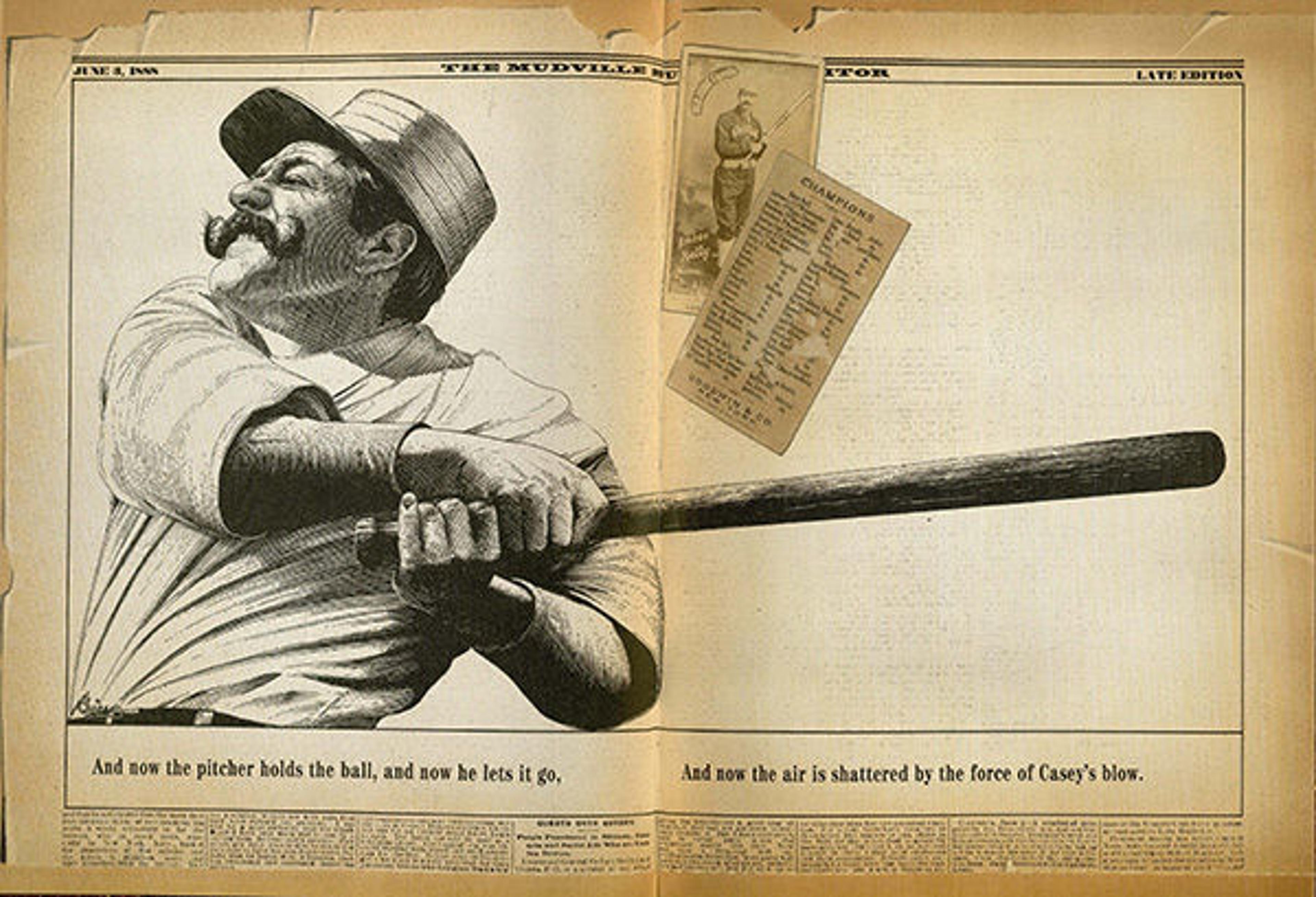
Bing, Christopher. Ernest L. Thayer's Casey at the Bat: A Ballad of the Republic Sung in the Year 1888. Brooklyn: Handprint Books, 2000. Nolen Library
Photography captures a specific moment in time, whether it be a freeze frame of the action during a game or enduring portraits of players, such as this one of baseball immortal Lou Gehrig during the 1936 season.

Charles M. Conlon. Lou Gehrig, 1936 New York Yankees, 1936. From McCabe, Neil. Baseball's Golden Age: The Photographs of Charles M. Conlon. New York: Abrams, 1993. Joyce F. Menschel Photography Library
Photography can also serve as historical images. Many people assume most architecture—and stadiums in particular—are permanent structures. However, Major League Baseball continues to replace and renovate stadiums at an alarming pace. Photography can help to document these now historic sites. The below photograph is of Comiskey Park, the former home of the Chicago White Sox from 1910 to 1990, which was razed in 1991.
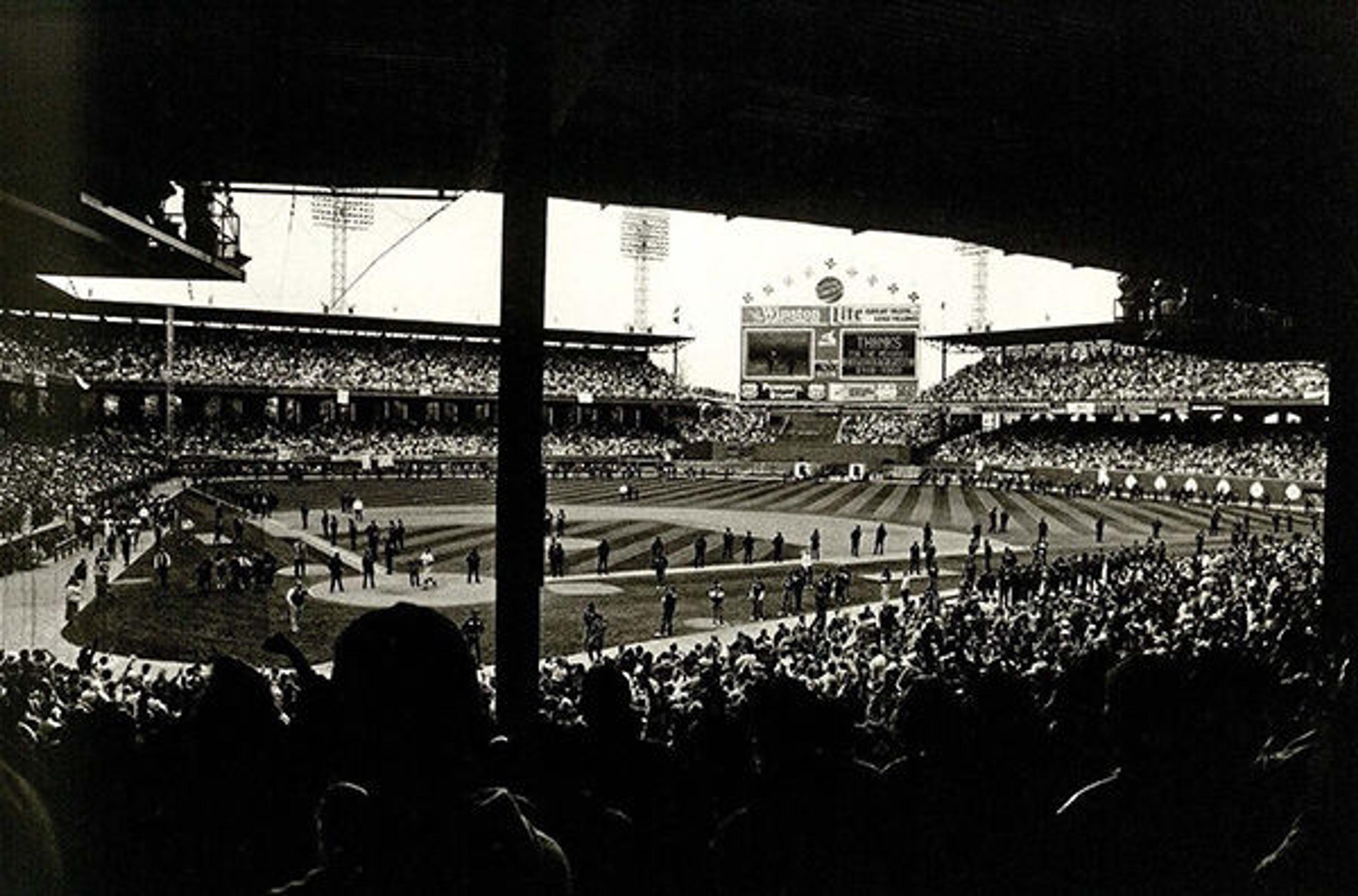
Thomas W. Harney. 1990, 1990. From Harney, Thomas W. Portraits from the Park: Comiskey Park Photographs, 1973–1990. Chicago: Columbia College Chicago Press, 2012. Thomas J. Watson Library
Not many people would put fashion design and baseball on the same playing field, but the uniforms have been designed and redesigned since the beginning of baseball. The book Baseball Uniforms of the 20th Century: The Official Major League Baseball Guide has illustrations of every baseball uniform in the American and National Leagues, presented chronologically from 1900 to 1991. To that end, we also have titles on the development of umpire uniforms and on the history of baseball caps.
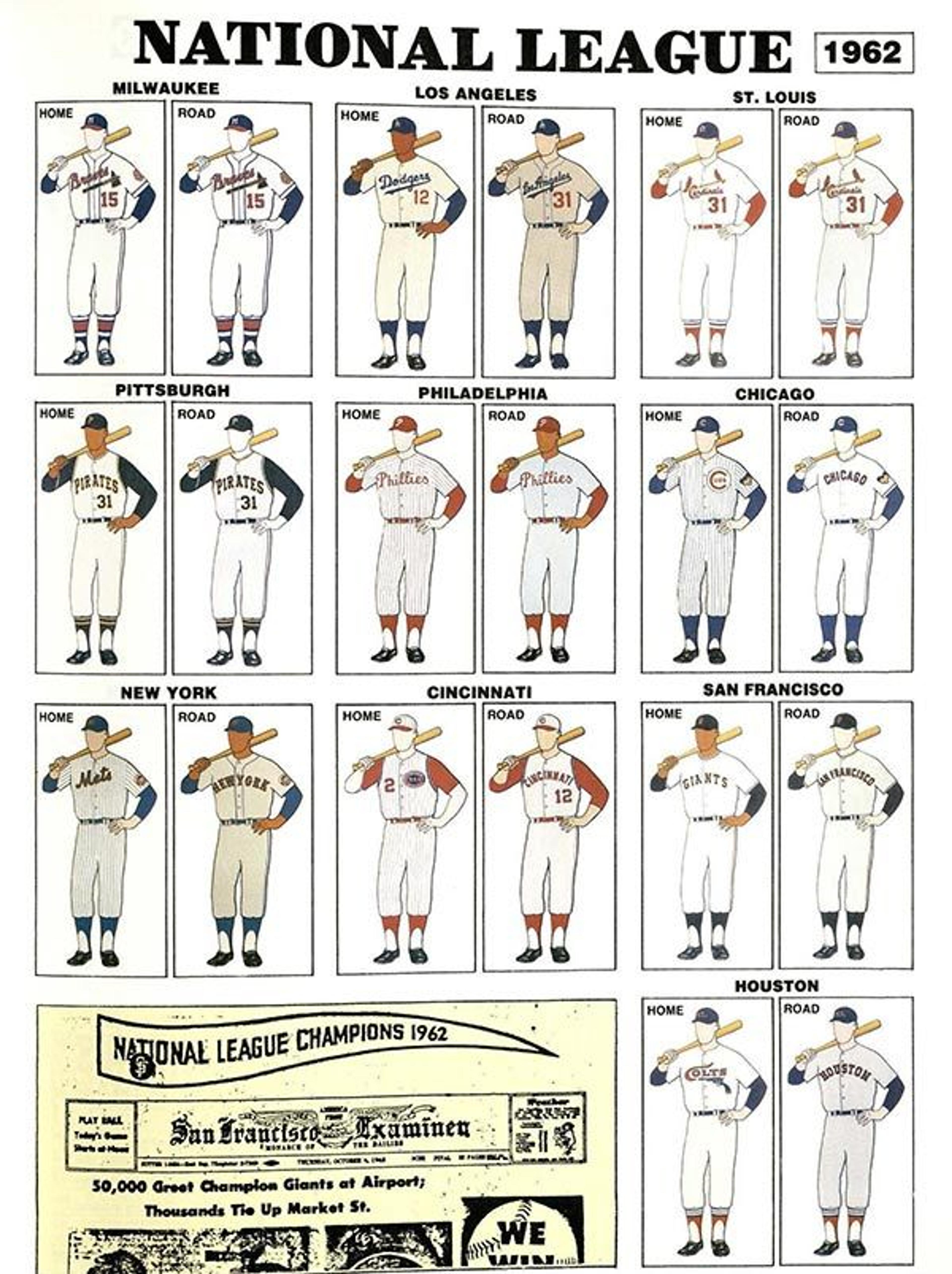
Okkonen, Marc. Baseball Uniforms of the 20th Century: The Official Major League Baseball Guide. New York: Sterling Publishing Company, 1991. The Costume Institute's Irene Lewisohn Costume Reference Library
Many fine artists have also found inspiration in baseball. The paintings below are all by prominent American artists of the twentieth century, demonstrating the influence baseball has had over American culture.
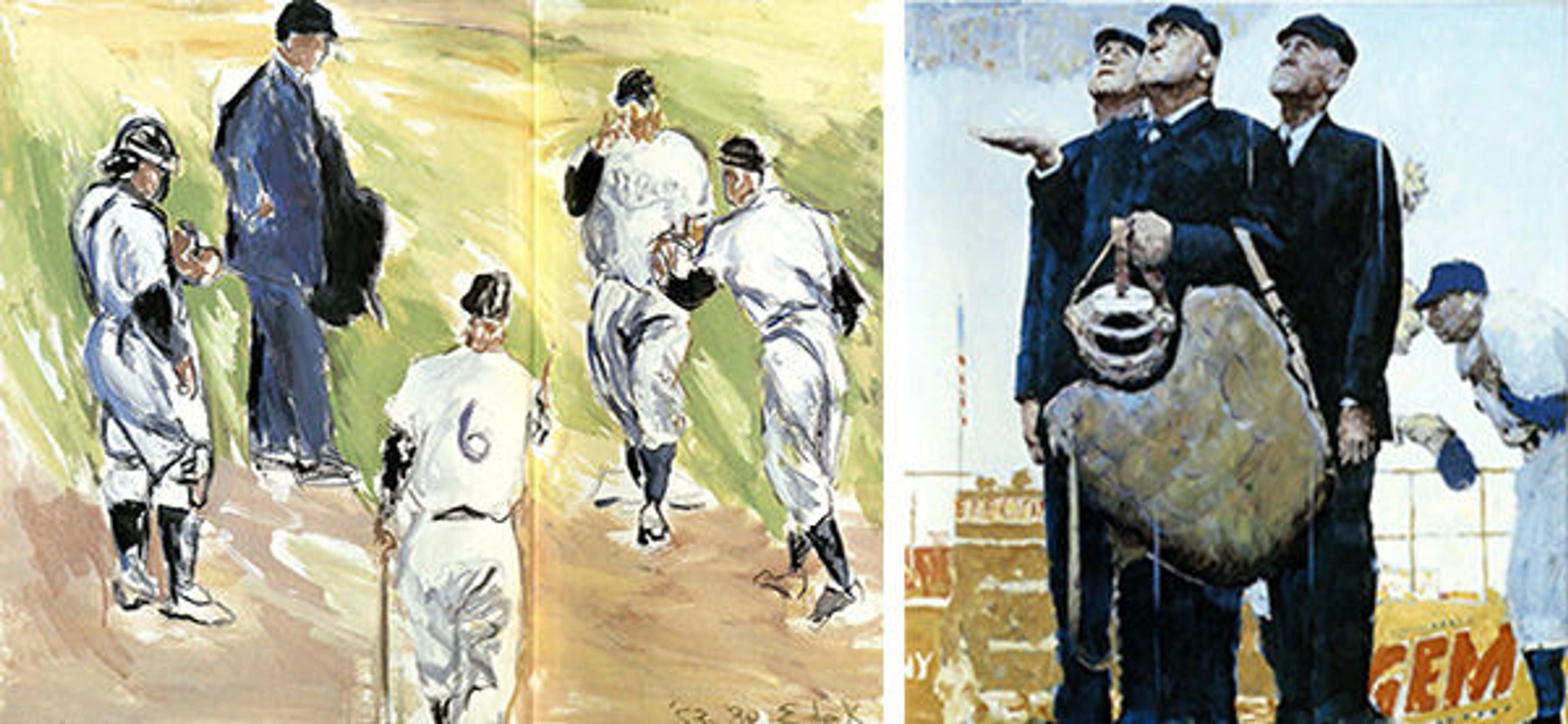
Left: Elaine de Kooning. Campy at the Plate, 1953–80. Right: Norman Rockwell, Study for Bottom of the Sixth, ca. 1940s. Both taken from Gordon, Peter H., and Shelly Dinhofer. The Art of Baseball: The Great American Game in Painting, Sculpture & Folk Art. New York: Harmony Books, 1989. Thomas J. Watson Library

Left: Jacob Lawrence. Strike, 1949. Right: Andy Warhol. Pete Rose, 1985. Both taken from Gordon, Peter H. Diamonds Are Forever: Artists and Writers on Baseball. San Francisco: Chronicle Books, 1987. Thomas J. Watson Library
Currently on display at the Met is a selection of baseball cards from the Jefferson R. Burdick Collection of Printed Ephemera. This rotation of cards is on view in gallery 773 through October 20, so come see what baseball at the Met looks like!
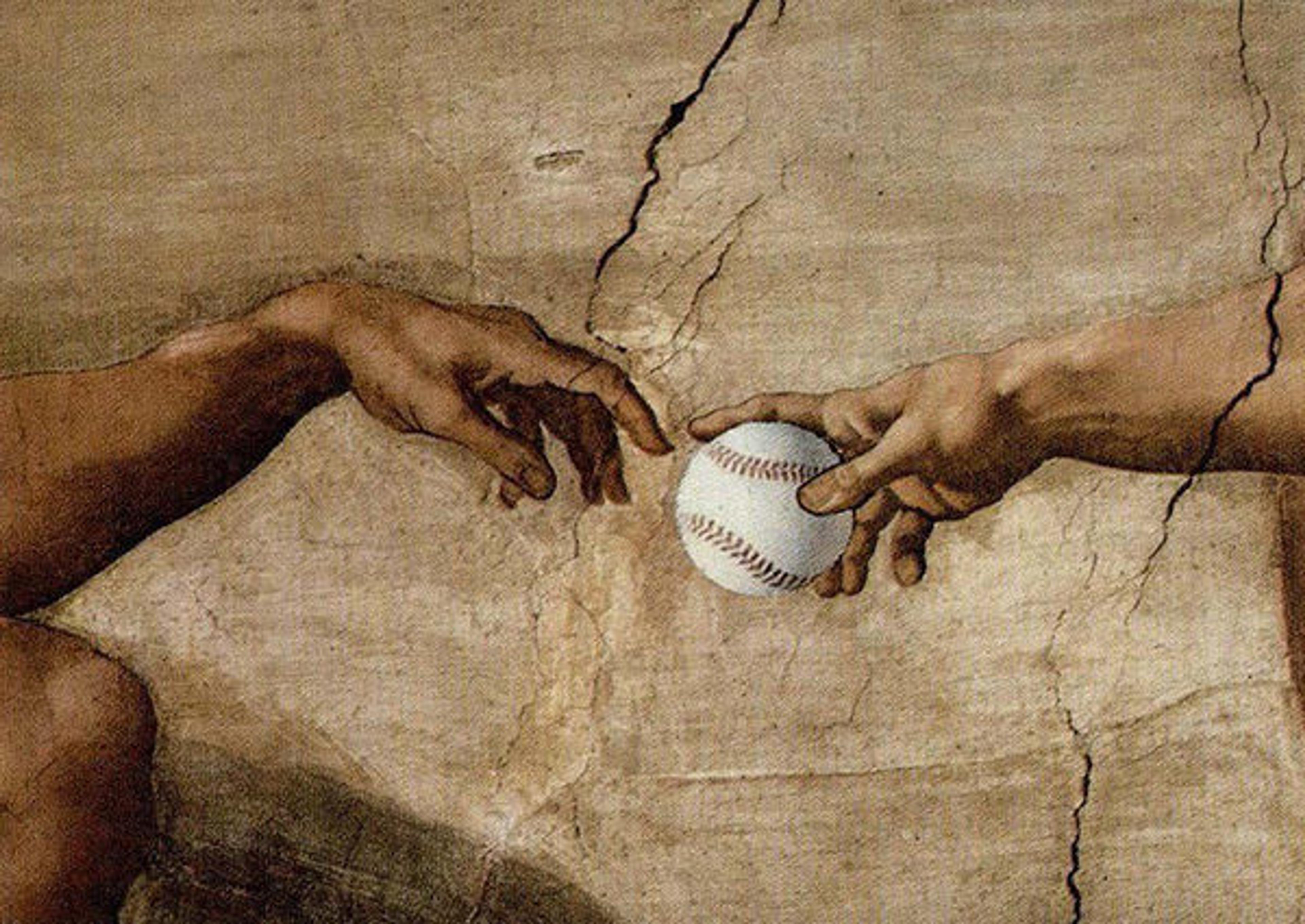
Michael Langenstein. Play Ball, 1982. From Gordon, Peter H. Diamonds Are Forever: Artists and Writers on Baseball. San Francisco: Chronicle Books, 1987. Thomas J. Watson Library
Related Link
Now at the Met: "Celebrating the Jefferson R. Burdick Collection" (September 24, 2015)
